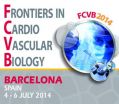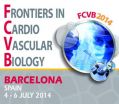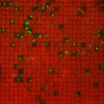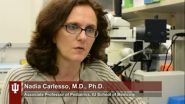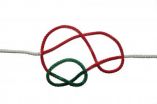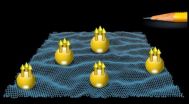The Lancet: New trial suggests cheaper drugs for common heart attack procedure could improve outcomes and save health budgets millions
2014-07-05
(Press-News.org) A new study published in The Lancet compares outcomes for two drugs used to prevent blood clot formation during emergency heart attack treatment. The study suggests that use of one of the drugs, heparin, could result in improved outcomes (such as a reduced rate of repeat heart attacks), compared to the other drug tested, bivalirudin, which is in widespread use in high-income countries, and is around 400 times more expensive than heparin.
The results of the HEAT-PPCI trial suggest that systematic use of heparin rather than bivalirudin after primary percutaneous coronary intervention (PPCI) – the most commonly used treatment for heart attack, which unblocks the arteries carrying blood to the heart – could save health services substantial sums of money, at the same time as potentially improving patient outcomes.
Patients who undergo PPCI usually receive a combination of antithrombotic drugs to prevent any further blood clots forming during the procedure and after it has been completed. The most commonly used antithrombotic drugs are unfractionated heparin and bivalirudin, and although several previous trials have compared the two drugs, the evidence is unclear as to which drug results in better outcomes.
The trial took place at the Liverpool Heart and Chest Hospital in the UK, where 1829 patients undergoing emergency angiography (an x-ray examination of the heart's arteries after a suspected heart attack) were recruited to the trial. More than four fifths of these patients then went on to receive PPCI; approximately half received heparin, and half received bivalirudin. Researchers then recorded how many patients in both groups experienced a major adverse cardiac event, such as death or another heart attack, within 28 days after surgery.
The results show that overall rates of major adverse cardiac events were significantly lower in the group who received heparin, although the rates of adverse events were low, as expected, in both groups. Within 28 days after surgery, 46 patients (5•1%) in the bivalirudin group died, compared to 39 (4•3%) of patients in the heparin group; 24 patients (2•7%) in the bivalirudin group had another heart attack in the same period, compared to 7 patients (0•8%) in the heparin group. Although bleeding complications are an acknowledged risk of antithrombotic drugs, there was no significant difference between the groups in the rate of complications.
According to lead author Dr Rod Stables, of the Liverpool Heart and Chest Hospital NHS Foundation Trust, UK, "As far as we are aware, our study is one of the first trials to recruit 100% of eligible patients presenting with the medical condition being examined, which means that it more closely resembles real life practice than many previous trials. The results suggest that the use of heparin has some advantage over bivalirudin in avoiding major adverse events, mainly in terms of reduced recurrent, additional heart attacks in patients recovering from PPCI. This finding might provide an opportunity, rare in modern health care, to provide improved outcomes at much reduced cost."*
In a linked Comment, Peter Berger and James Blankenship of Geisinger Health System, in Pennsylvania, USA, point out that the although the study has a number of limitations – including an open-label, single-centre design – the study has the advantage of closely resembling actual clinical practice, and including many patients who would have been excluded from earlier trials comparing the two drugs. They write that, "Even if heparin alone had produced statistically similar outcomes to bivalirudin, it would have been a win for heparin. A drug that costs less than a 1/400th of another that has similar efficacy and safety ought to be used preferentially."
The design of the HEAT-PPCI trial has attracted some criticism within the medical community because of its use of delayed consent: patients provided their consent to participate only after they had been given either heparin or bivalirudin, leading some doctors to raise concerns that the trial design did not conform to medical ethics standards.
However, in a second linked Comment, David Shaw, of the Institute for Biomedical Ethics in Basel, Switzerland, disputes these criticisms, writing that, "In this context, the strategy was preferable to attempting to obtain consent from potentially incompetent patients needing extremely urgent cardiac treatment… In routine clinical care, it would be perfectly normal for a doctor to choose either heparin or bivalirudin without involvement of the patient in the decision."
"Informed consent for percutaneous coronary intervention is frequently not sought at all; why patients should be asked to consent in advance to formal randomisation of a drug used in the intervention is thus unclear. It would have been unethical to have done the study differently. Attempting to get consent from patients would have increased the risk of harming them by delaying treatment, and could also have affected recruitment."
INFORMATION:
NOTES TO EDITORS:
*Quote direct from author and cannot be found in text of article.
This study was funded by Liverpool Heart and Chest Hospital, UK National Institute of Health Research, The Medicines Company, AstraZeneca, The Bentley Drivers Club (UK).
ELSE PRESS RELEASES FROM THIS DATE:
Association found between high cholesterol and breast cancer
2014-07-04
This news release is available in Spanish.
Barcelona, 4 July 2014: An association between high blood cholesterol and breast cancer has been found in a study of more than 1 million patients over a 14 year time period in the UK. The research will be presented today at Frontiers in CardioVascular Biology (FCVB) 2014 in Barcelona, Spain. The meeting is organised by the Council on Basic Cardiovascular Science of the European Society of Cardiology (ESC) in collaboration with 13 European cardiovascular science societies.
http://spo.escardio.org/SessionDetails.aspx?eevtid=65&sessId=13301&subSessId=3494
Dr ...
First evidence for painless atrial fibrillation treatment
2014-07-04
Barcelona, 4 July 2014: The first evidence for a shockless treatment for atrial fibrillation (AF) will be presented today at Frontiers in CardioVascular Biology (FCVB) 2014 in Barcelona, Spain. The meeting is organised by the Council on Basic Cardiovascular Science of the European Society of Cardiology (ESC) in collaboration with 13 European cardiovascular science societies. http://spo.escardio.org/SessionDetails.aspx?eevtid=65&sessId=13104
Dr Brian O. Bingen, first author, said: "AF is the most common cardiac arrhythmia. Symptoms range from the feeling of fish flapping ...
Effects of conflict on women's reproductive health need to be managed sensitively
2014-07-04
Clinicians need to be sensitive and aware of the unique challenges of women's reproductive health needs in times of conflict, suggests a new review published today (4 July) in The Obstetrician & Gynaecologist (TOG).
Approximately 1.5 billion people are currently living in countries affected by conflict, fragility or large-scale violence. Women and children account for approximately 75% of those displaced by conflict and roughly 20% of those displaced are women of reproductive age and one in five will be pregnant.
This new review looks at how conflict can negatively ...
New discovery in living cell signaling
2014-07-03
A breakthrough discovery into how living cells process and respond to chemical information could help advance the development of treatments for a large number of cancers and other cellular disorders that have been resistant to therapy. An international collaboration of researchers, led by scientists with the U.S. Department of Energy (DOE)'s Lawrence Berkeley National Laboratory (Berkeley Lab) and the University of California (UC) Berkeley, have unlocked the secret behind the activation of the Ras family of proteins, one of the most important components of cellular signaling ...
Compounded outcomes associated with comorbid Alzheimer's disease & cerebrovascular disease
2014-07-03
LEXINGTON, Ky. (July 3, 2014) -- Researchers from the Sanders-Brown Center on Aging at the University of Kentucky have been able to confirm anecdotal information on patients with both Alzheimer's disease (AD) and cerebrovascular disease (CVD) using mouse models in two different studies.
The findings of these two studies, which were recently published in Acta Neuropathologica and Alzheimer's Research & Therapy, have potentially significant implications for patients with both disorders.
Both papers studied CVD in Alzheimer's disease mouse models using different lifestyle ...
Biochemical cascade causes bone marrow inflammation, leading to serious blood disorders
2014-07-03
VIDEO:
Like a line of falling dominos, a cascade of molecular events in the bone marrow produces high levels of inflammation that disrupt normal blood formation and lead to potentially deadly...
Click here for more information.
INDIANAPOLIS -- Like a line of falling dominos, a cascade of molecular events in the bone marrow produces high levels of inflammation that disrupt normal blood formation and lead to potentially deadly disorders including leukemia, an Indiana University-led ...
How knots can swap positions on a DNA strand
2014-07-03
Physicists of Johannes Gutenberg University Mainz (JGU) and the Graduate School of Excellence "Materials Science in Mainz" (MAINZ) have been able with the aid of computer simulations to confirm and explain a mechanism by which two knots on a DNA strand can interchange their positions. For this, one of the knots grows in size while the other diffuses along the contour of the former. Since there is only a small free energy barrier to swap, a significant number of crossing events have been observed in molecular dynamics simulations, i.e., there is a high probability of such ...
From pencil marks to quantum computers
2014-07-03
Introducing graphene
One of the hottest materials in condensed matter research today is graphene.
Graphene had an unlikely start: it began with researchers messing around with pencil marks on paper. Pencil "lead" is actually made of graphite, which is a soft crystal lattice made of nothing but carbon atoms. When pencils deposit that graphite on paper, the lattice is laid down in thin sheets. By pulling that lattice apart into thinner sheets – originally using Scotch tape – researchers discovered that they could make flakes of crystal just one atom thick.
The name ...
Payback time for soil carbon from pasture conversion to sugarcane production
2014-07-03
The reduction of soil carbon stock caused by the conversion of pasture areas into sugarcane plantations – a very common change in Brazil in recent years – may be offset within two or three years of cultivation.
The calculation appears in a study conducted by researchers at the Center for Nuclear Energy in Agriculture (CENA) of the University of São Paulo (USP) in collaboration with colleagues from the Luiz de Queiroz College of Agriculture (Esalq), also at USP. The study also included researchers from the Federal Institute of Alagoas (IFAL), the Brazilian Bioethanol Science ...
New satellite data like an ultrasound for baby stars
2014-07-03
An international team of researchers have been monitoring the "heartbeats" of baby stars to test theories of how the Sun was born 4.5 billion years ago.
In a paper published in Science magazine today, the team of 20 scientists describes how data from two space telescopes – the Canadian Space Agency's MOST satellite and the French CoRoT mission – have unveiled the internal structures and ages of young stars before they've even emerged as full-fledged stars.
"Think of it as ultrasound of stellar embryos," explains University of British Professor Jaymie Matthews, MOST ...
